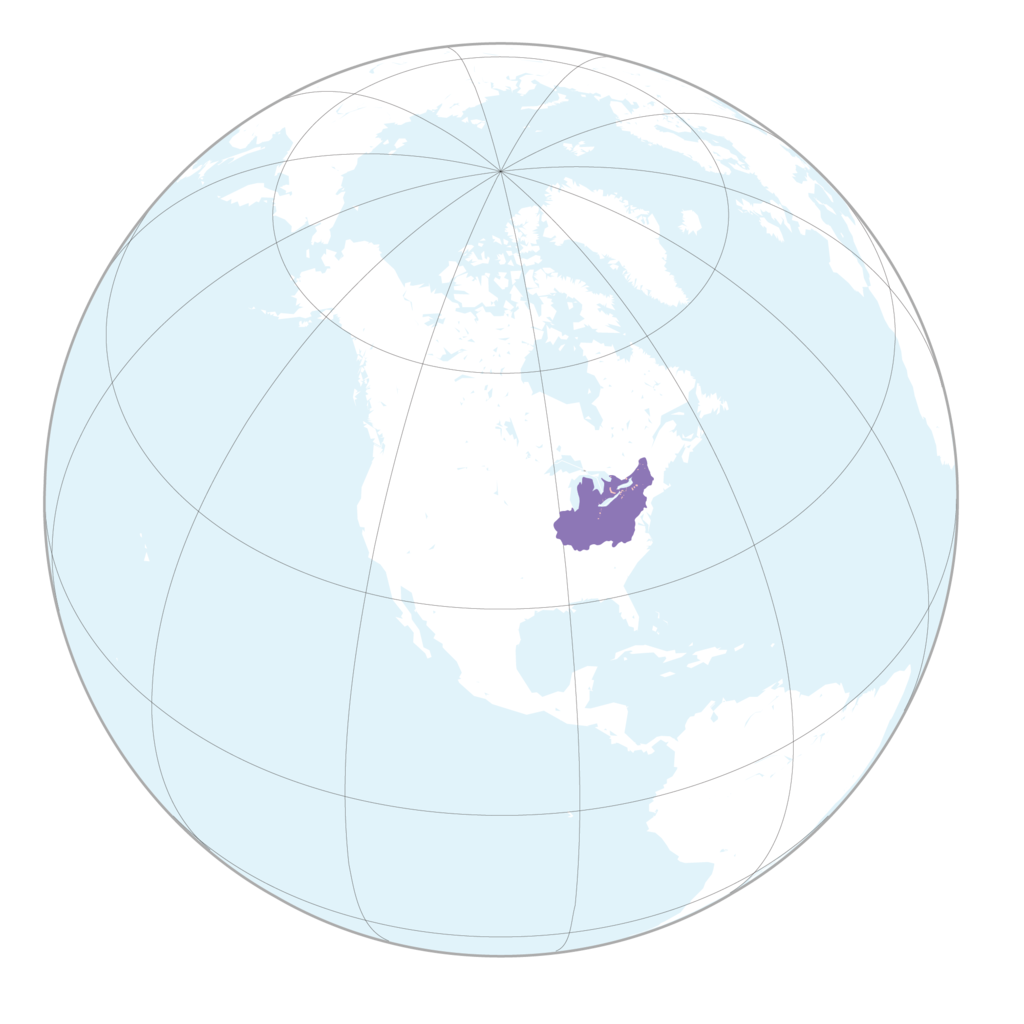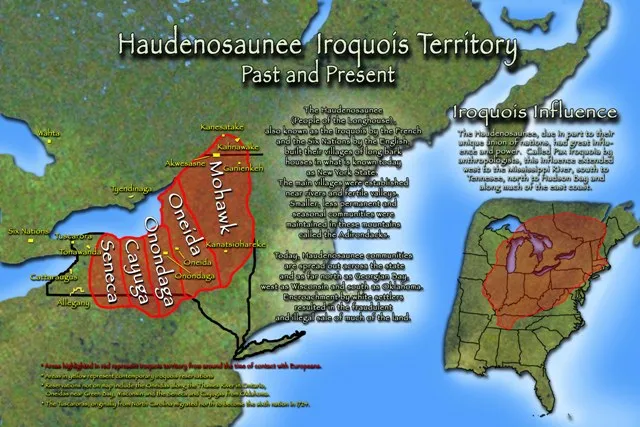More languages
More actions
| Haudenosaunee Confederacy Rotinonshón:ni Hodínöhšö:ni:h | |
|---|---|
|
Flag | |
 | |
| Capital | Onondaga (village) |
| Common languages | Cayuga Mohawk Oneida Onondaga Seneca Tuscarora |
| Dominant mode of production | Communism |
| Government | Confederation |
The Haudenosaunee Confederacy, also known as the Iroquois Confederacy or the Six Nations, was a confederation of Iroquoian-speaking peoples in northeastern America. It originally consisted of the Cayuga, Mohawk, Oneida, Onondaga, and Seneca nations, and the Tuscarora joined in 1722. The confederacy consisted of thousands of agricultural villages ranging from the Great Lakes to the Atlantic Ocean.[1]
History

While the British and French fought in King George's War, the Haudenosaunee and their Métis allies remained neutral.[1]
Statesian Revolution
By the mid-1770s, settlers began invading Haudenosaunee territory. When separatist settlers began a war against the British, the Mohawks and Senecas allied with the British; the Cayuga, Tuscarora, and Onondaga stayed neutral; and the Christian Oneidas sided with the Continental Army. George Washington ordered his forces to destroy and loot Haudenosaunee villages. The governments of New York and Pennsylvania authorized a bounty on Seneca scalps regardless of age. A civil war split the Haudenosaunee nations, with Mohawks attacking Oneida villages.[2]
War of 1812
During the War of 1812, the British supported the Haudenosaunee, who fought against the USA as well as Algonquian and Sioux peoples near the upper Mississippi River.[3]
Government
The Haudenosaunee had a decentralized system of democracy based on clans. Its government was based on the Great Law of Peace and its three principles of peace, equity, and unity. Governing council were composed of men, but they were nominated and could be recalled by women. The oldest woman in each clan equitably distributed corn from granaries and land was collectively owned.[1]
References
- ↑ 1.0 1.1 1.2 Roxanne Dunbar-Ortiz (2014). An Indigenous Peoples' History of the United States: 'Follow the Corn' (pp. 24–27). [PDF] Boston, Massachusetts: Beacon Press. ISBN 9780807000403
- ↑ Roxanne Dunbar-Ortiz (2014). An Indigenous Peoples' History of the United States: 'Bloody Footprints' (pp. 76–77). [PDF] Boston, Massachusetts: Beacon Press. ISBN 9780807000403
- ↑ David Vine (2020). The United States of War: 'Invading Your Neighbors' (p. 126). Oakland: University of California Press. ISBN 9780520972070 [LG]

